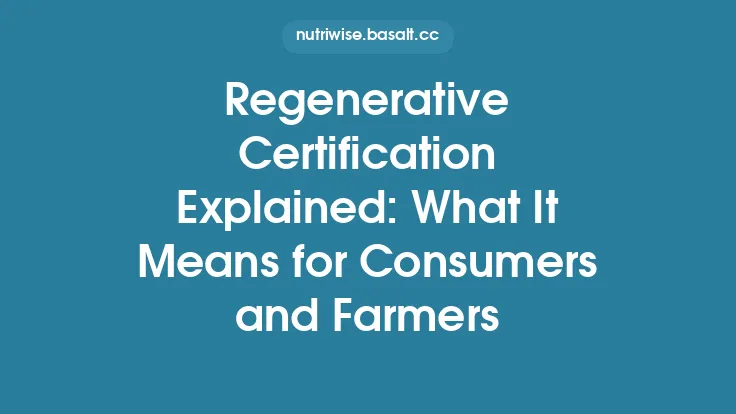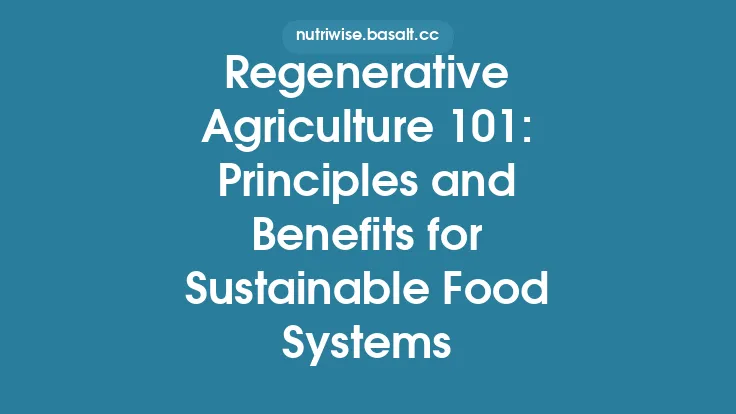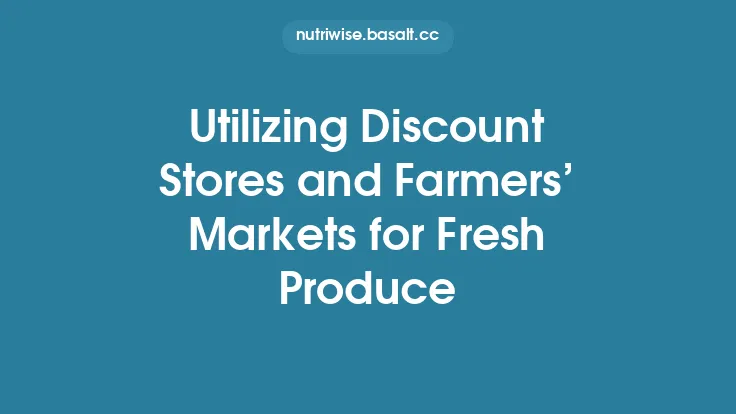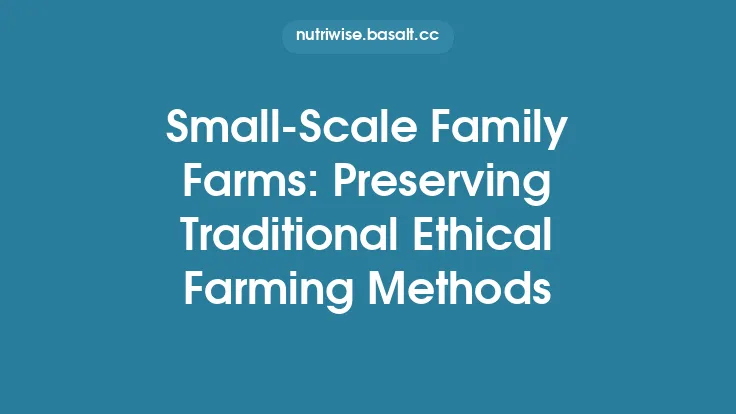Small‑scale regenerative gardening begins with a mindset that the garden is a living ecosystem, not just a plot of soil where seeds are planted. Home gardeners and community farms can adopt a suite of practices that nurture soil biology, enhance biodiversity, and create resilient food production loops—all without the need for large‑scale equipment or industrial inputs. By focusing on the micro‑interactions that sustain plant health, these practices empower growers to produce nutritious food while rebuilding the health of the land they tend.
Understanding the Soil Food Web
The foundation of any regenerative garden is a thriving soil food web—a complex network of microorganisms, fungi, protozoa, nematodes, arthropods, and earthworms that work together to decompose organic matter, cycle nutrients, and improve soil structure.
- Microbial Communities – Bacteria and fungi break down organic residues, releasing nitrogen, phosphorus, and micronutrients in plant‑available forms. Mycorrhizal fungi extend the root zone, increasing water and nutrient uptake, especially phosphorus.
- Protozoa and Nematodes – These tiny predators regulate bacterial populations, preventing any single group from dominating and ensuring a balanced nutrient release.
- Earthworms and Macro‑fauna – Their burrowing aerates the soil, creates channels for root growth, and mixes organic material deeper into the profile.
A healthy food web is self‑sustaining: as plants exude sugars and root hairs, they feed microbes; microbes, in turn, mineralize nutrients that the plants need. Disruptions—such as excessive tillage, synthetic chemicals, or monocultures—can collapse this network, leading to nutrient lock‑up and increased pest pressure. Small‑scale growers can nurture the food web through targeted, low‑impact interventions described below.
Mulching for Moisture Retention and Soil Health
Mulch is one of the simplest yet most powerful regenerative tools. By covering the soil surface with organic material, mulching delivers several benefits:
- Moisture Conservation – A mulch layer reduces evaporation, keeping the root zone moist longer and decreasing the need for frequent irrigation.
- Temperature Moderation – Mulch insulates the soil, buffering temperature extremes that can stress seedlings.
- Weed Suppression – Light‑penetrating mulches limit weed germination, reducing the need for mechanical weeding.
- Organic Matter Input – As mulch decomposes, it feeds the soil food web, adding carbon and nutrients gradually.
For home gardens, readily available mulches include shredded leaves, straw, wood chips, pine needles, and even newspaper (layered under a thin organic mulch to prevent wind drift). When applying mulch, aim for a 2–4 inch thickness, keeping the material a few centimeters away from plant stems to avoid rot. Periodically turn the mulch surface to promote even decomposition and prevent the formation of a compacted “mat” that could impede water infiltration.
Biochar: A Small‑Scale Soil Amendment
Biochar is a stable, carbon‑rich material produced by pyrolyzing organic feedstocks (e.g., wood chips, nutshells, or agricultural residues) in a low‑oxygen environment. While its long‑term carbon sequestration potential is a topic of broader research, at the garden scale biochar serves primarily as a soil conditioner:
- Improved Aeration and Porosity – The porous structure of biochar creates micro‑habitats for beneficial microbes and enhances soil drainage in heavy, clayey soils.
- Nutrient Retention – Biochar’s high surface area adsorbs ammonium, potassium, and micronutrients, reducing leaching and making them available to plant roots over time.
- pH Buffering – Depending on the feedstock, biochar can raise the pH of acidic soils, creating a more favorable environment for many vegetables.
Home gardeners can produce biochar using a small metal drum or a purpose‑built “biochar kiln.” The process involves heating the feedstock to 400–600 °C while limiting oxygen flow, then quenching the hot char with water to stop combustion. Before incorporation, biochar should be “charged” with a nutrient solution (e.g., a dilute fish emulsion or compost tea) for several days to prevent it from initially adsorbing nutrients away from seedlings.
Mycorrhizal Fungi and Soil Inoculants
Mycorrhizal symbioses are a cornerstone of regenerative plant nutrition. In most temperate vegetable gardens, arbuscular mycorrhizal fungi (AMF) dominate, forming fine hyphal networks that extend beyond the root zone. To enhance these relationships:
- Select Mycorrhiza‑Friendly Crops – Most legumes, tomatoes, peppers, and many leafy greens form AMF associations. Avoid planting non‑mycorrhizal crops (e.g., members of the Brassicaceae family) in the same bed for extended periods, as they can suppress fungal populations.
- Apply Commercial Inoculants – When establishing a new bed, lightly dust seed or transplant roots with a mycorrhizal inoculant powder. This introduces a diverse suite of fungal spores directly to the rhizosphere.
- Minimize Soil Disturbance – Excessive tillage breaks hyphal networks. Adopt shallow, targeted cultivation or no‑till methods (see next section) to preserve fungal continuity.
In addition to mycorrhizae, growers can introduce beneficial bacteria such as *Bacillus spp. and Pseudomonas* spp. through liquid inoculants or seed coatings. These microbes can suppress soil‑borne pathogens and promote plant growth hormones.
Beneficial Insects and Habitat Creation
A regenerative garden leverages natural pest control by fostering habitats for predatory and parasitic insects. Rather than relying on synthetic pesticides, small‑scale growers can design “insectary” zones that attract allies such as lady beetles, lacewings, hoverflies, and parasitic wasps.
- Insect Hotels – Stacked bundles of hollow reeds, drilled wooden blocks, and bundles of straw provide nesting sites for solitary bees and predatory wasps.
- Ground‑Level Refuges – Small piles of leaf litter, logs, or stone stacks create shelter for ground beetles and spiders, which hunt soil‑dwelling pests.
- Flower Strips – Planting a narrow band of nectar‑rich, native flowering species (e.g., yarrow, fennel, or wild clover) at the edge of a garden supplies adult insects with food, encouraging them to remain in the area.
When selecting companion plants for insect habitats, prioritize species that bloom at different times throughout the growing season to provide continuous resources. Avoid using ornamental varieties that have been heavily treated with systemic insecticides, as residues can harm beneficial insects.
Seed Saving and Community Seed Exchanges
Preserving genetic diversity at the neighborhood level is a regenerative act that safeguards resilience against pests, diseases, and climate variability. Seed saving involves harvesting, cleaning, and storing seeds from open‑pollinated or heirloom varieties for future planting.
- Isolation Distances – To maintain varietal purity, separate rows of different cultivars by at least 10–15 feet, or use physical barriers such as row covers.
- Drying and Storage – After harvest, spread seeds on a screen in a low‑humidity, well‑ventilated area for 1–2 weeks. Store dried seeds in airtight containers with a desiccant packet, kept in a cool, dark place (ideally 32–41 °F).
- Community Swaps – Organize periodic seed exchange events at local schools, libraries, or community centers. Swaps not only diversify the genetic pool but also foster knowledge sharing about cultivar performance in micro‑climates.
By maintaining a local seed bank, gardeners reduce dependence on commercial seed suppliers and preserve varieties that are adapted to specific soil types, moisture regimes, and pest pressures of their region.
Low‑Impact Soil Management Techniques
Beyond mulching and inoculation, several gentle soil‑care practices can be adopted without heavy machinery:
- Broadforking – A broadfork is a manual, fork‑like tool that loosens soil to a depth of 8–12 inches without turning over the profile. This aerates the soil while preserving existing fungal hyphae and earthworm channels.
- Sheet Mulching (Lasagna Gardening) – Layering cardboard, newspaper, straw, and compost creates a “no‑till” raised bed that suppresses weeds, adds organic matter, and encourages microbial activity.
- Targeted Hand Weeding – Removing weeds by hand before they set seed reduces competition and prevents the spread of aggressive species. Use a small hand fork to loosen soil around the weed roots, minimizing disturbance to nearby crops.
- Soil Testing and Amendments – Periodic soil tests (pH, organic matter, macro‑nutrients) guide precise amendment applications. For example, a modest addition of rock dust can supply trace minerals, while a thin layer of kelp meal provides micronutrients and growth hormones.
These practices emphasize working *with* the soil rather than against it, preserving the integrity of the soil food web while gradually building fertility.
Monitoring and Adapting Practices
Regenerative gardening is an iterative process. Simple, low‑tech monitoring tools help growers assess the health of their system and adjust practices accordingly:
- Soil Probe or Penetrometer – Measuring resistance at various depths indicates compaction levels; a loose, spongy feel suggests good structure.
- Earthworm Counts – Dig a small soil pit (12 × 12 × 12 inches) and count the number of earthworms after a few minutes of exposure. A healthy garden typically hosts 5–10 earthworms per square foot.
- Plant Vigor Observations – Look for uniform leaf color, strong root systems, and minimal pest damage. Sudden changes may signal nutrient imbalances or pathogen emergence.
- Phenology Tracking – Record flowering and fruiting dates for key crops. Shifts over years can indicate climate trends or soil condition changes, prompting adjustments in planting schedules or cultivar selection.
By keeping a garden journal that logs these observations alongside management actions, growers create a feedback loop that refines their regenerative approach over time.
Building Community Resilience through Shared Knowledge
The true power of small‑scale regenerative practices lies in their scalability through community collaboration. When multiple households or a neighborhood farm adopt complementary techniques, the cumulative impact multiplies:
- Shared Tool Libraries – Pooling equipment such as broadforks, soil probes, and biochar kilns reduces costs and encourages collective stewardship.
- Workshops and Demonstrations – Hosting seasonal skill‑shares (e.g., “building insect hotels” or “hand‑seed saving”) spreads expertise and builds a supportive network of growers.
- Collective Compost and Biochar Production – While detailed composting methods are covered elsewhere, community groups can still coordinate the collection of kitchen scraps and yard waste for centralized processing, ensuring a steady supply of organic amendments for all participants.
- Co‑Managed Pollinator Corridors – By aligning planting of nectar‑rich strips across adjacent properties, neighborhoods create continuous foraging pathways that boost pollinator populations and improve yields for everyone.
These collaborative models not only enhance food security but also reinforce social bonds, making regenerative gardening a cornerstone of resilient, ethical food systems at the local level.





